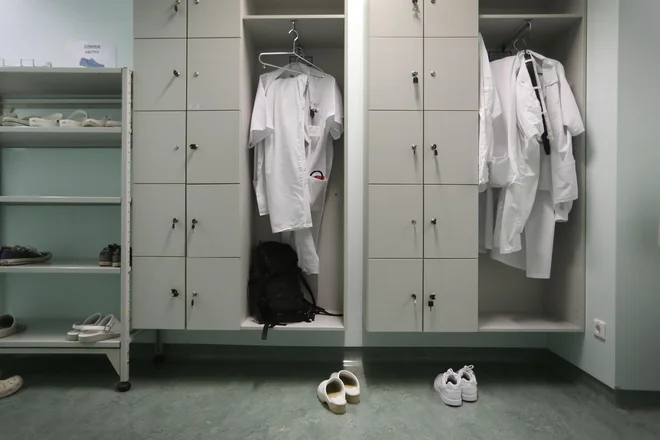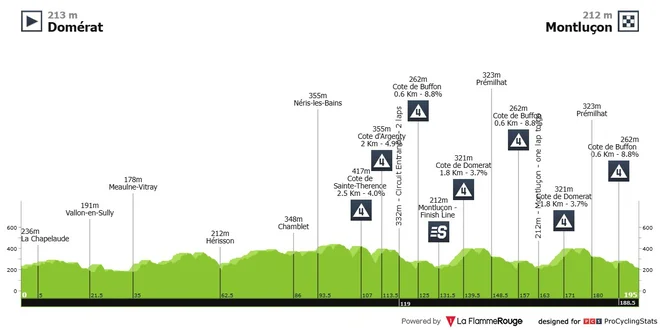Challenges in dealing with primary health care

On May ninth, World Family Day is World Day. Family doctors, together with pediatricians working in dispensaries for children and youth, and the emergency medical service are the foundation and spine of the healthcare system. For all citizens or. Patients over the age of 18 who need any health care and services are the first route to visit family medicine. The only exceptions are patients who need emergency medical care. Nevertheless, very little is written about the importance and issue of family medicine. Perhaps in the last few years, family medicine has been repeatedly mentioned only in connection with very topical and acute issues, when nearly 150,000 Slovenian citizens do not have a selected personal physician who is generally a specialist in family medicine for adults. However, this fact, which is the fundamental problem of the primary health system in Slovenia, which belongs to family medicine, has no media in the media, or in professional circles significantly a major response. Most of the health and controversy on healthcare has been referring to public and private health for the last five years, but in the last year, has been almost exclusively related to public and private health. As a rule, a citizen and a patient who chooses to visit a self -paying private specialist outpatient clinic first visits the family medicine clinic first. They all work in a public health network, ie. at the health center or with a concession.
The phenomenon of pushing family medicine into the background has been present in Slovenia for a very long time. At the beginning of this millennium, family doctors were not allowed to have waiting times, in the same day they had to examine all patients who came to the waiting room, sometimes during the epidemic of various viruses and flu. They were respected and appreciated, both among patients and among their colleagues.
With the rapid development of the medical profession in Slovenia, health policy in Slovenia for many years has strengthened mostly secondary (hospital) and tertiary part of the activity, and the primary level of health care was in the second plan, because all patients, regardless of abundance, were examined daily, care and referred to specialists and there were no « problems ». The breakthrough began with 2000, when specialization was established. After 2010, the number of family medicine specialists increased. By 2017, as a rule, all the specialization places were occupied, and in 2018, the interest in family medicine had dramatically decreased. Where was the cause of a very drastic decline in interest from graduates of the Faculty of Medicine for Family Medicine, and there was an interest in specializing in radiology, ophthalmology, dermatology, orthopedics? I leave the answer to this question to the reader, but the fact is that the burdens of family medicine doctors were very high and that almost no one was seriously dealing with this problem.
According to the Medical Chamber of Slovenia, there are 1447 family medicine specialists in Slovenia, and only 1071 operates in the public health network. This means that more than 25 percent do not register patients and are not selected doctors. Also interesting is the information of the HIIS that as soon as 14.5. Where is the cause of the fact that about 150,000 patients do not have a doctor chosen?
A major problem for family medicine is also the big differences between younger and older doctors in the number of patients selected. Family medicine specialists over 55 have an average of up to 20 percent more registered patients than younger doctors. Also interesting is the comparison between doctors who are employed in public health institutions and concessionaire doctors. On average, concessionaires have 15 percent more registered patients than, on average, doctors employed in public institutions. Why?
The retirement of each family doctor requires that he is replaced by at least 1.3 doctors, if all his patients want to take over. However, since the flow of young specialists in family medicine has been the last five or. For six years significantly too small, the number of citizens who will not have a chosen personal physician will only increase each year. Does anyone think about it? Are there any strategic orientations accepted, how to attract young graduates to opt for family medicine specialization? What discourages graduates of medical colleges so that they do not opt for family medicine? On the day of family doctors, they presented some arguments and proposals at the Medical Chamber of Slovenia, which are certainly too modest and too decisive. Also, the adopted Strategy for the Development of Primary Health, adopted by the Ministry of Health, does not solve this problem strategically and effectively. The fact is that it takes at least five years from the beginning of specialization to completion and independent work in the outpatient clinic, and even more. This means that at least 100 specialists should be accepted in the fall and then more than 50 each year in order for the situation to start at least partially normalized after 2030.
In 2027, satellite emergency centers will be established, where new doctors will need to be employed. Which one and where? Years ago, a new specialization of emergency medicine was established with the aim of taking over work in emergency centers and satellite emergency centers. After a few years since the beginning of this specialization, the interest of graduates of the Faculty of Medicine has decreased significantly, and is almost gone. Only three candidates are expected to apply for 20 posts this year, which is not enough for even one satellite emergency center. However, since emergency medical centers and future satellite emergency centers are the cornerstone of each health care system and must operate 24 hours every day of the year, doctors will be necessary to obtain work in these centers. Where from? From family medicine clinics? Today, there are quite a few family medicine doctors in existing emergency centers with specialist emergency medicine, surgeons and internists. This means an even smaller number of family doctors to work in family outpatient clinics.
Why there is no enrollment in the emergency medicine specialization. Is the number decreasing each year? Why is there no motivation for this study, but on the other hand, there is an exceeding motivation to enroll in specialization in radiology, dermatology, ophthalmology? Working in emergency centers and outpatient clinics is very stressful, quick and very responsible decisions are needed in resolving urgent conditions and lives, the work is in the turn of 12 hours, each third turn is usually at night, etc. What about payment for such work and responsibility? The current wage reform did not solve this problem!
What should the government, the Ministry of Health and the profession do together to stop this drip against the catastrophe? How to achieve a greater interest in enrolling in specialization in family medicine and even more on emergency medicine specialization? Quick and effective measures are needed, as in a few years we are threatened by the collapse of the primary health care system (family medicine and emergency services). Proposal for actions:
• Any family medicine and emergency medicine specialist should receive a monthly salary allowance of at least $ 1,000 to $ 1500 net throughout their specialization. In doing so, young specialists would be financially encouraged to enroll. Some solutions in this area are already in force in specialization in family medicine.
• Given the extremely high deficit of both professions, the allowance to the basic salary of 30 to 50 percent should be determined immediately.
• Information systems should be improved and unified.
• Promote citizens to greater responsibility for their own health.
• Participation should be introduced when visiting a family outpatient clinic.
• Immediately determine the uniform price list of non -emergency services that patients require and expect in emergency centers.
• Edit the transfer of some competencies from the family medicine physician to other healthcare professionals and colleagues (graduated nurses).
• A very important reason why there is no interest in graduates from the Faculty of Medicine for Enrollment in the Specialization of Family Medicine is the « reputation of this specialization » (this problem, which has been present for a very long time, is not talked about at all). The fact is that some specialists at the secondary and tertiary levels still have a rather humiliating attitude towards the primary level. Students also point to this problem in the polls, which in her lecture in October 2022 was alerted by a doctor from ZD Ljubljana, Mag. Simona Repar Bornšek, Ph.D. honey. Also, patients often hear criticism when visiting a secondary or tertiary level when visiting a secondary or tertiary level. This problem, which is not negligible, must be regulated by the Medical Chamber of Slovenia, thereby contributing to the significantly greater reputation of doctors at the primary level.
• In the next two years, the patient’s rejection limit should be raised by 10 percent with adequate financial incentive.
The proposed measures may be somewhat radical, but it beats almost twelfth hour.







